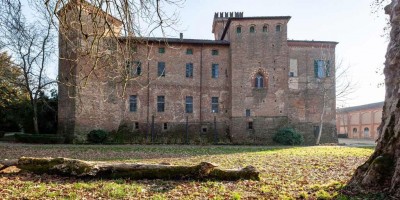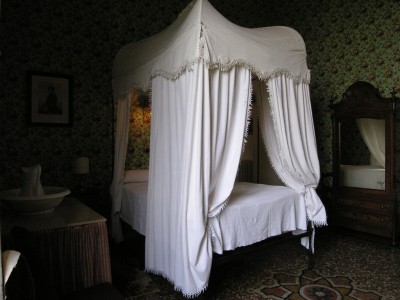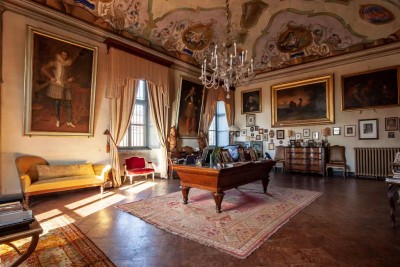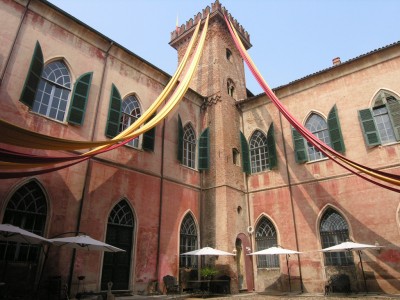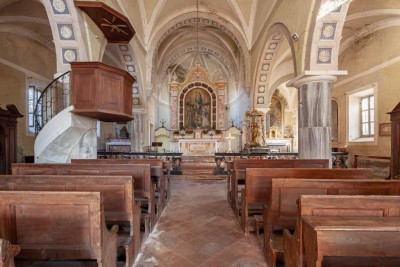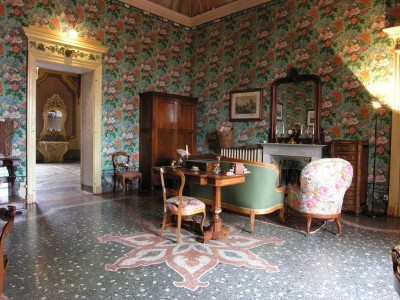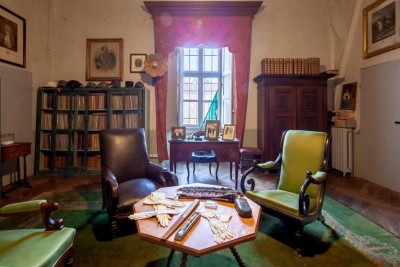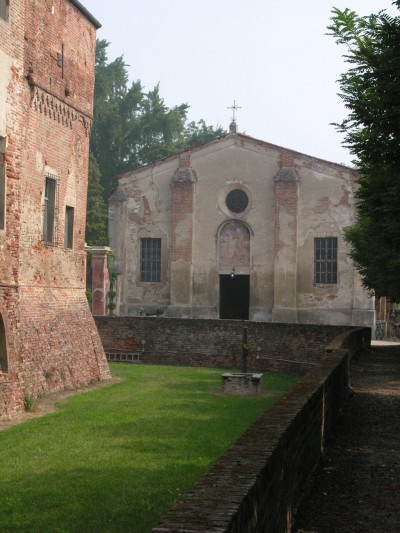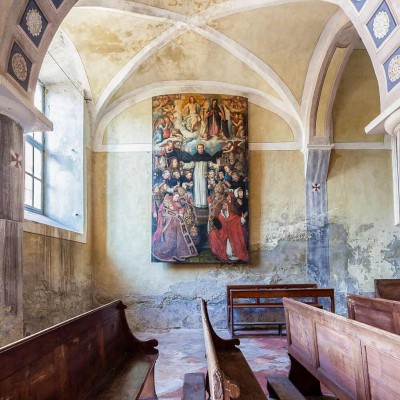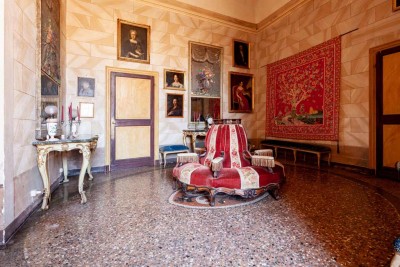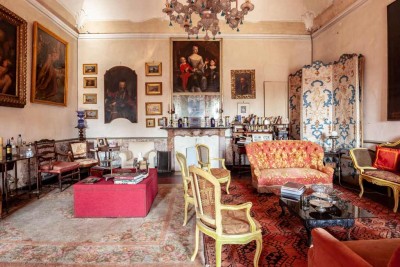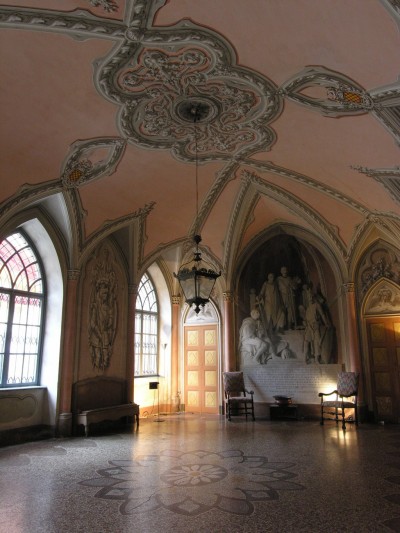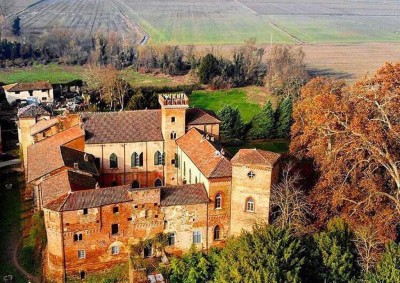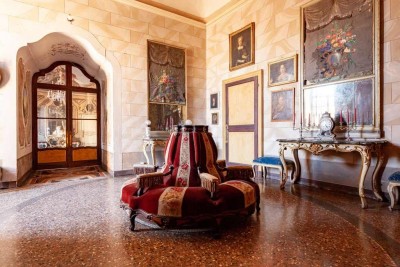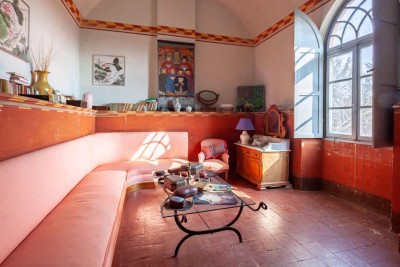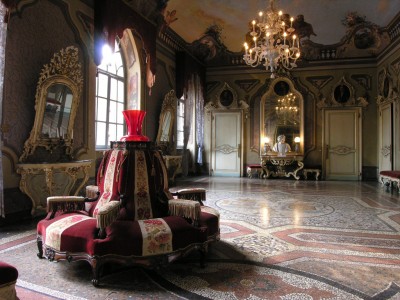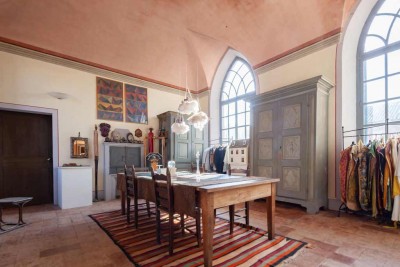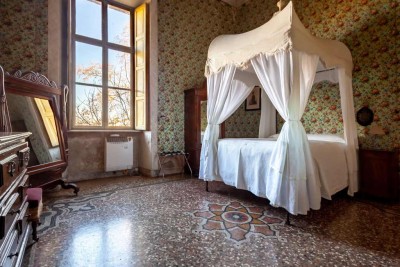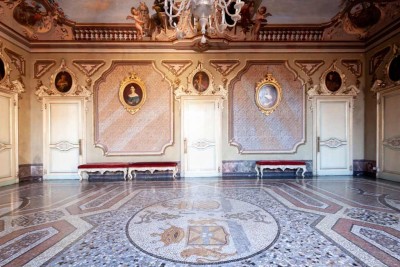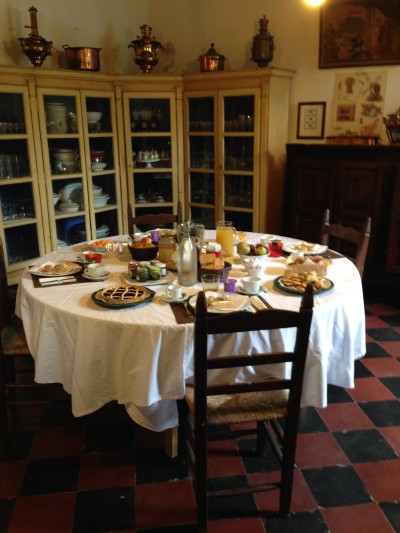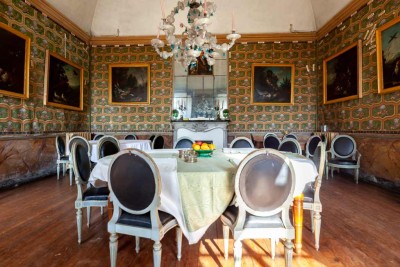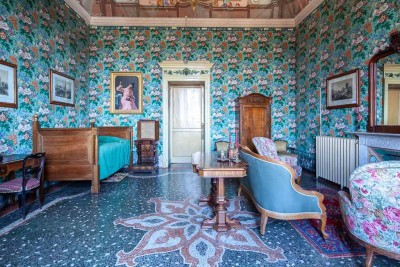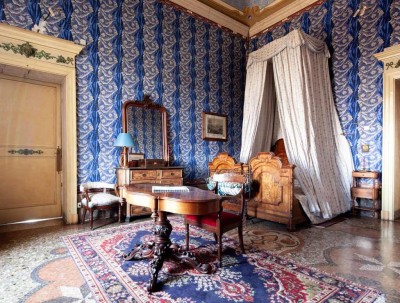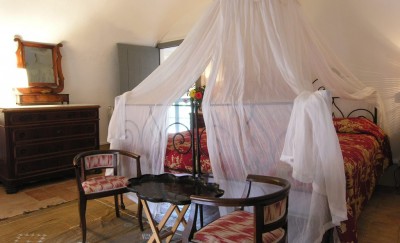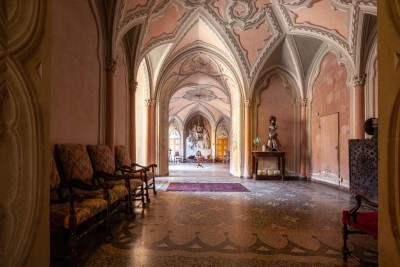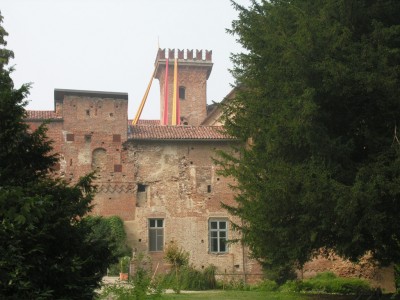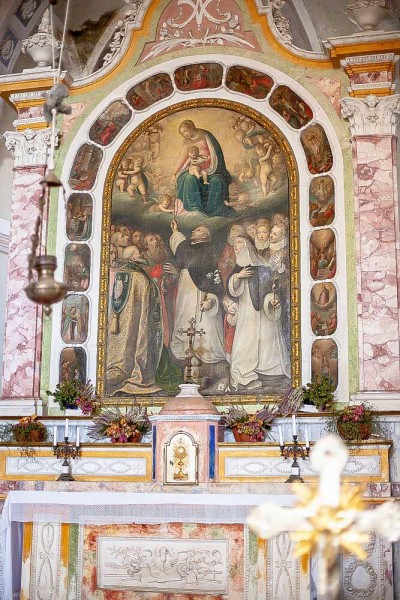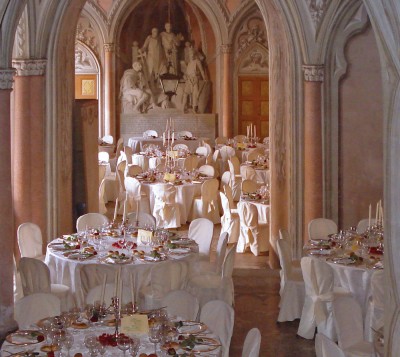Contact the abode
CASTELLO SANNAZZARO IN GIAROLE
SINCE ITS ORIGINS IN THE XII CENTURY, THE CASTLE HAS ALWAYS REMAINED IN THE POSSESSION OF THE SANNAZZARO FAMILY, WHO STILL RESIDE THERE TODAY
The Castle of Giarole was built subject to a decree issued by Emperor Frederick Barbarossa to four knights of the Sannazzaro family on 4 December 4, 1163, granting them the right to build a castle wherever they desired on their estates. They chose to construct the castle in the plains on the eastern borders of Monferrato, a few kilometres from Casale Monferrato, in an area close to the Po River which was abounding in vineyards and charming medieval villages.
Over the centuries, the property underwent various modifications which eventually transformed it from a defensive fortress into a country residence. Nevertheless, it still retains its original structure today, including three out of the four corner towers, a moat and traces of the drawbridge at the entrance.
In the 18th century, the southern wing was redecorated, while the western and northern wings underwent significant restoration and refurbishment between 1854 and 1857. This latter part was adorned with frescoes by painters from Turin such as Grosso and Morgari, following the neo-Gothic and neo-Renaissance style prevalent during that period. Of particular interest are also the wallpaper in the bedrooms which date back to the mid-19th century, as well as the overdoors in the ballroom and some of the drawing rooms.
Throughout the centuries, the Castle has hosted many notable guests, including the Paleologo Marquises of Monferrato in the 14th and 15th centuries, the Gonzagas in the 16th and 17th centuries, King Charles Emmanuel III with his son, future King Victor Amadeus III, in 1745, and King Victor Emmanuel II and Emperor Napoleon III in May 1859. In 1911, Count Giambattista Sannazzaro Natta hosted His Royal Highness Prince Emanuele Filiberto of Savoy, Duke of Aosta, during military manoeuvres which took place in Monferrato.
The castle has been owned by the Sannazzaro family since its construction, and they still reside there to this day.
THE HISTORY OF CASTELLO SANNAZZARO
Initial construction of the residence was granted due to a decree by Emperor Frederick Barbarossa authorising Guido, Burgundio, Assalito and Raineri, all knights of the Sannazzaro family, to build a castle wherever they wished on their estates. Further documentation attests to the existence of the Castle from the late 1200s-early 1300s.
Modified many times during different eras, Castello Sannazzaro became a country residence in the 18th century. Between 1854 and 1857, it was renovated and restored in accordance with the prevailing neo-Gothic taste of the time, with major decorative work carried out in particular in the western and northern wings.
The Castle has been owned by the Sannazzaro family, who are still in residence, since its inception. Restoration work was completed from 1854 to 1857 by Count Giacinto Sannazzaro Natta, who commissioned the transformation of the entrance hall, the main staircase, the ballroom and the bedrooms in the neo-Gothic (and neo-Renaissance) style. Many talented Piedmontese artists and painters worked for Giarole during this period. One renowned painter named Grosso fell to his death while frescoing the ballroom. His ghost is said to roam the halls of the castle and it is likely that it is he who turns the lights on in places you’d least expect it (watch your step when you visit the tower!).
GUIDED TOURS
The guided tour of the Castle begins at the 14th-century Church of San Giacomo, which houses paintings and frescoes from the 16th century, continuing into the entrance hall and inner courtyard, which then leads to the grand entrance hall and its neo-Gothic frescoes. From the main entrance hall, you can access the recently reorganised archives (April 2020) and proceed into the late 18th-century music room, which contains a wealth of family objects and memorabilia. Going up the main staircase, also neo-Gothic in style, you reach the antechamber and the ballroom. The latter is adorned with 19th-century decorations, including frescoes on the ceiling that depict the figure of the ghost, the young Turin painter named Grosso, who died here and is commemorated as a victim of his art.
Four bedrooms can be visited next to the ballroom: the green flower room, the blue lace room, the pink room and the striking white canopy room, named after a French bed originating from the 18th century. We then move on to a large closet cum dressing room, which still serves its original purpose and houses a small collection of irons from various eras. The last room that can be visited is the small salon in the northwest tower, also known as the Chinese parlour. This then leads down by the stairs of the main tower or lookout tower to the inner courtyard.
On the way out, it is possible to visit the garden with its large English-style park, important century-old trees, and parts of the estate and ancient cellars.
ACCOMMODATION
Castello Sannazzaro’s accommodation comprises 4 double rooms with ensuite bathrooms and 2 twin rooms with a shared bathroom, all of which are furnished and decorated with period furniture and artefacts. All the rooms are located within the castle and have access to the inner courtyard.
Breakfast is served in the medieval wing of the castle in a room with beamed ceilings which is decorated with furnishings and objects from the family's private collections dating from 1500 to 1900. Breakfast times are from 8:30 to 9:45 a.m. Different timings can be arranged with the property in exceptional cases.
PRIVATE EVENTS AND WEDDINGS
The grand entrance hall is available for private events and weddings. The hall is accessed from the inner courtyard and can accommodate up to 100-120 people seated at round tables. Alternatively, the ballroom and antechamber located on the first floor of the castle can be chosen, and are heated and in use almost year-round.
PLACES OF INTEREST IN THE VICINITY
Casale Monferrato with its Baroque palaces, the Civic Museum, the Cathedral of Sant'Evasio and other Baroque churches; Cellamonte; Vignale; the Monferrato region with its "Infernot" (ancient wine cellars); Turin (1-hour drive); Genoa (1-hour drive); Milan (1-hour drive); Pavia (40 minutes’ drive).
